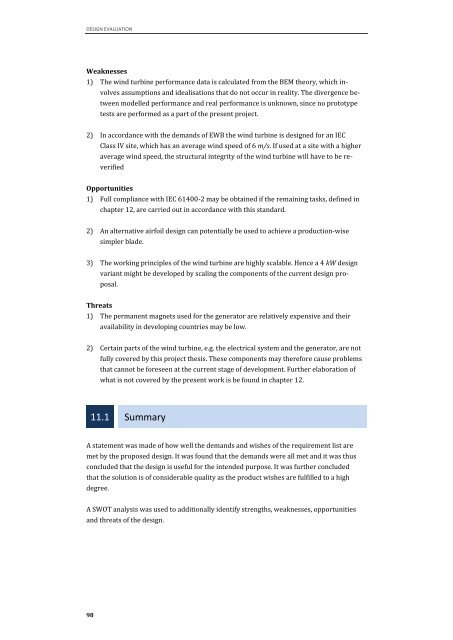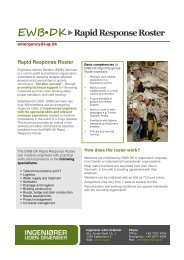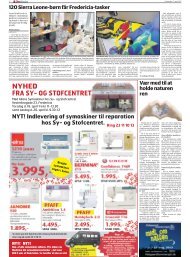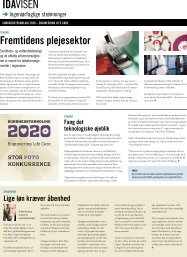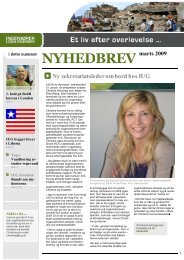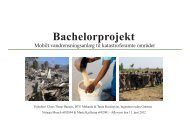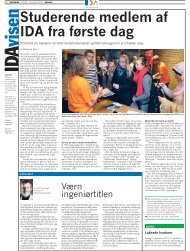Create successful ePaper yourself
Turn your PDF publications into a flip-book with our unique Google optimized e-Paper software.
DESIGN EVALUATION<br />
Weaknesses<br />
1) The wind turbine performance data is calculated from the BEM theory, which in-<br />
98<br />
volves assumptions and idealisations that do not occur in reality. The divergence be-<br />
tween modelled performance and real performance is unknown, <strong>sin</strong>ce no prototype<br />
tests are performed as a part of the present project.<br />
2) In accordance with the demands of EWB the wind turbine is designed for an IEC<br />
Class IV site, which has an average wind speed of 6 m/s. If used at a site with a higher<br />
average wind speed, the structural integrity of the wind turbine will have to be re-<br />
verified<br />
Opportunities<br />
1) Full compliance with IEC 61400-2 may be obtained if the remaining tasks, defined in<br />
chapter 12, are carried out in accordance with this standard.<br />
2) An alternative airfoil design can potentially be used to achieve a production-wise<br />
simpler blade.<br />
3) The working principles of the wind turbine are highly scalable. Hence a 4 kW design<br />
variant might be developed by scaling the components of the current design pro-<br />
posal.<br />
Threats<br />
1) The permanent magnets used for the generator are relatively expensive and their<br />
availability in developing countries may be low.<br />
2) Certain parts of the wind turbine, e.g. the electrical system and the generator, are not<br />
fully covered by this project thesis. These components may therefore cause problems<br />
that cannot be foreseen at the current stage of development. Further elaboration of<br />
what is not covered by the present work is be found in chapter 12.<br />
11.1 Summary<br />
A statement was made of how well the demands and wishes of the requirement list are<br />
met by the proposed design. It was found that the demands were all met and it was thus<br />
concluded that the design is useful for the intended purpose. It was further concluded<br />
that the solution is of considerable quality as the product wishes are fulfilled to a high<br />
degree.<br />
A SWOT analysis was used to additionally identify strengths, weaknesses, opportunities<br />
and threats of the design.


